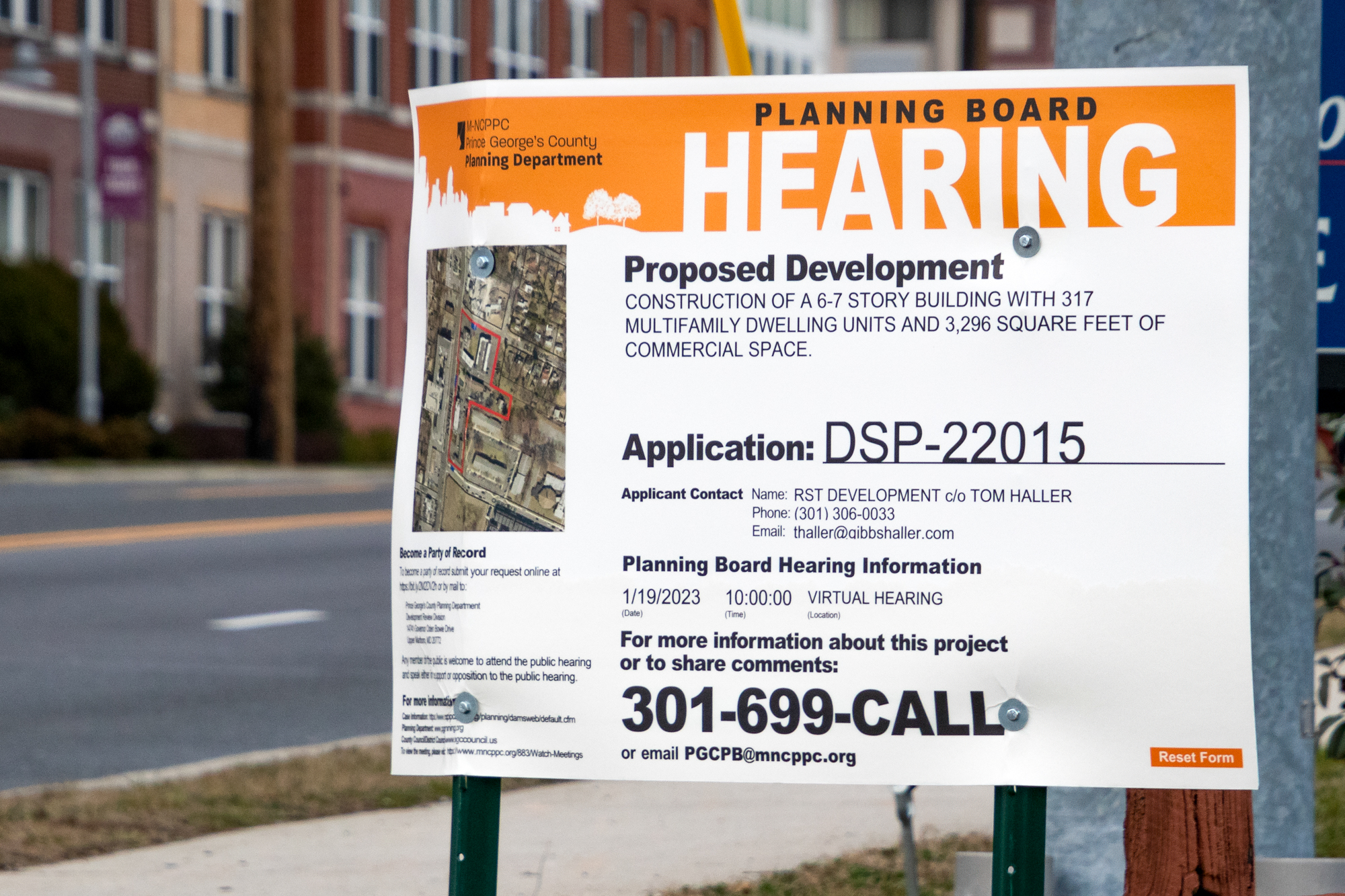Flats at College Park, a 317 unit low-income housing development, is expected to be built between Delaware and Cherokee streets by 2025, according to developers.
The apartment complex is expected to have one, two and three-bedroom units ranging from approximately $1,200 to $2,500 per month. It will be one of the only designated affordable housing developments in College Park alongside Atworth and Branchville Gardens, said Terry Schum, the planning and community development director in College Park.
The current median household income in College Park is $69,736. The federal Low-Income Housing Tax Credit program subsidized the apartments, so rent is based on area median income and state-determined rent control rates, said Danny Copeland, an analyst at RST Development.
[Here’s how traffic patterns are changing on UMD’s campus]
Along with the apartments, there will be about 4,000 square feet of commercial space intended for Meals on Wheels, a nonprofit organization.
“It’s going to be a good project for College Park,” Schum said. “In addition to providing affordable housing for the city, it’s also going to help improve the Route 1 streetscape.”
The developers have not broken ground, but the project has gone through the entitlement process and has been approved to work on their detailed site plan, Schum said.
“We lack newly constructed, affordable housing,” Schum said. “Most of the new construction here has been student housing, so to get this project that focuses on families is really important.”
[Knox Road is almost always noisy — and UMD students have had enough]
College Park is always looking to have affordable housing, Schum said. But it’s tough to do because it needs to be part of a program through the state or federal government.
“Low-income housing is an important component of every community,” Willow Lung-Amam, an associate professor of urban studies and planning, said. “It recognizes that housing is a basic human right.”
Housing is affordable to families if they’re not spending more than 30 percent of their income on rent, Lung-Amam added. College Park is an area of concentrated poverty — areas where overall poverty is at 30 percent or more — because students live in the area and often don’t have stable incomes.
Because there are so many students who live in College Park, the data is skewed and overlooks long-term residents in need of affordable housing, Lung-Amam said.
“All municipalities [should ensure] that there’s housing choices in every community,” she said. “It’s not just serving the residents, it’s also serving to make sure that we’re living in an equitable region where there are housing choices for all people at all income levels.”
Unaffordable housing is a driving reason for people to move from the city to the suburbs, and also pushes families out of the region. Communities are losing low-income families that have helped to provide services in the area, Lung-Amam said.
In areas with high incomes, high job growth and strong demographics, housing tends to be too high for people who need housing close to work, Copeland said.
“It speaks to the mission of what we’re trying to create here,” Copeland said. “We’re focused on building community.”
CORRECTION: A previous version of this story misquoted Willow Lung-Amam. This story has been updated.



